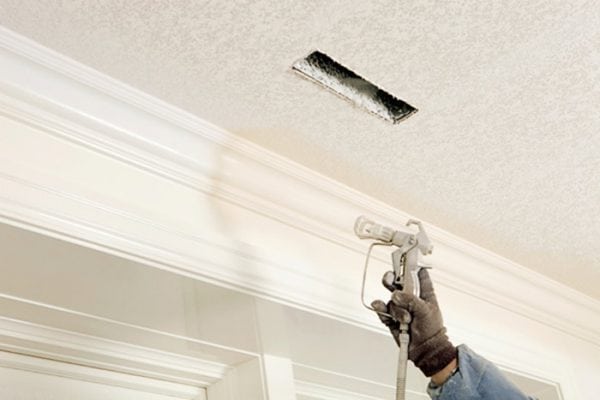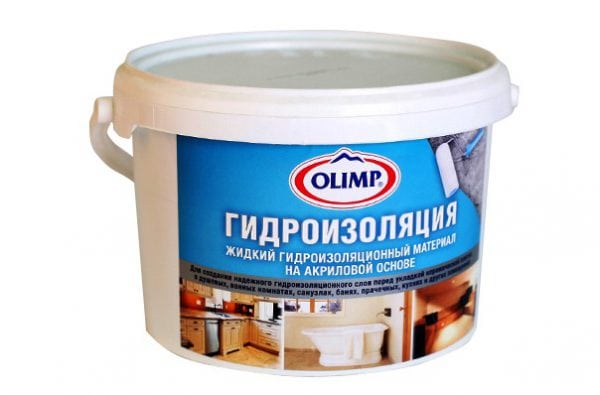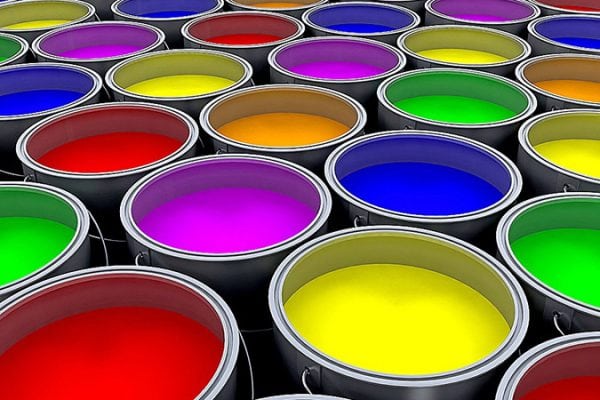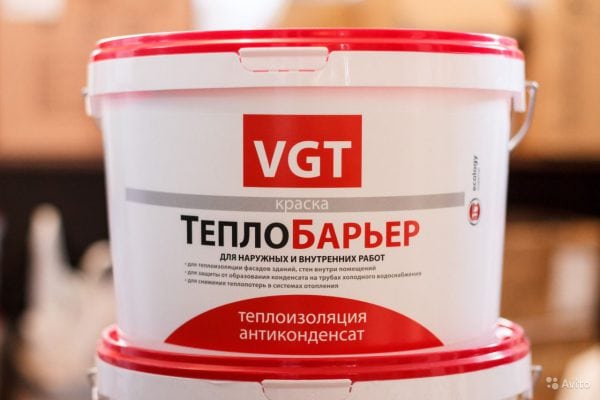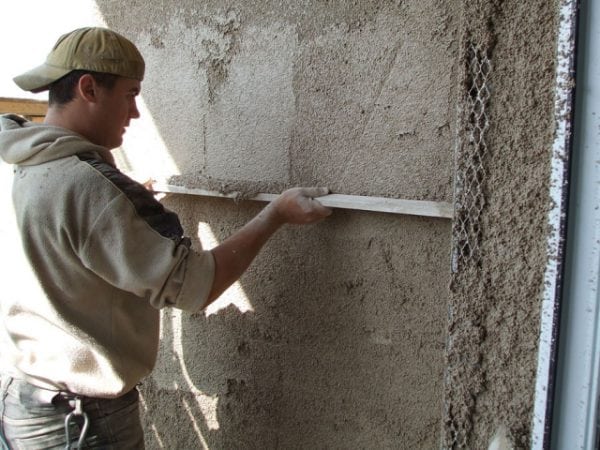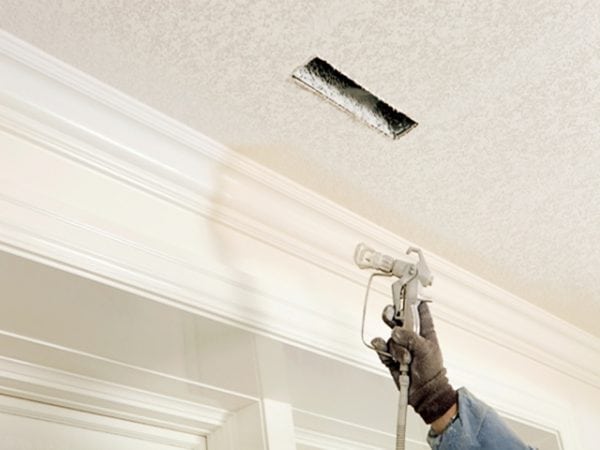The most obvious purpose of paint or plaster when applying them to the walls of a house is to give the surface a more attractive updated look. However, this is not the only task of the finishing material. It is equally important to protect the base material and residents from adverse environmental influences. For example, noise can be protected with soundproofing paint and plaster. Other types of insulating materials protect against moisture and electric current. This article will discuss the types and features of the use of insulating materials.
- Fields of application
- Moisture protection
- Soundproofing
- Electrical Insulating Compounds
- Other types of insulating paints
- Soundproofing plaster
- Plastering
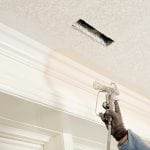
Fields of application
Insulating materials can be used to protect buildings of various types - not only residential, but also for technical purposes. Insulation is able to protect the room from excessive humidity, electric current and noise exposure.
Moisture protection
The issue of waterproofing is one of those problems that can be solved with the help of paint and varnish material. It should be noted that most of the paints, one way or another, has waterproofing properties. However, if you really need serious protection, you can not do without a special paintwork. After coating with such a composition, the surface will withstand even direct exposure to water for a long time.
Waterproofing coatings should have certain qualities:
- The paint should be intended both for interior work and for facade decoration, since double-sided painting provides a more reliable protection.
- It is desirable that, in addition to moisture resistance, coatings are resistant to ultraviolet rays and temperature extremes.
- The composition should include antisalt additives and antifungal drugs. Antiseptic qualities are very important for good waterproofing, because moistened material is an ideal place for the development of mold and fungus.
to contents ↑Note! The quality of the paintwork material is affected not only by the expiration date, but also by the storage conditions. The paint should not be placed in too cold rooms (at sub-zero temperatures) or too hot. Information on the terms and conditions of storage can be read on the product packaging.
Soundproofing
An increased level of sound insulation can be achieved by painting the surface with special paint. Soundproofing coatings have a number of characteristic features:
- The basis of this type of paint is bitumen or an acrylic composite element. Both substances have a number of features: acrylic is better suited for indoor use, since it is practically odorless (water based), and bitumen is much more effective on the street, but is not suitable for rooms, as it smells bad. At the same time, bituminous coatings are much cheaper than acrylic, which is important when painting large areas.
- The maximum level of sound insulation can be obtained if the composition is applied in a thick layer. It is recommended to use a brush or roller as a working tool. The paint is dissolved in a synthetic composition.
- For the isolation of moving elements (for example, machine or car parts), LMB based on bitumen is best suited.This group of colors is capable of absorbing not only sounds, but also vibrations.
to contents ↑
Electrical Insulating Compounds
To protect against current, special paints with electrical insulating properties are produced. The cost of such coatings is quite high, but the value of electrical insulation is high, since the safety of residents depends on this. The main qualities of electrical insulating paints (in addition to the main one - protection against current) are their durability and resistance to other negative environmental influences (ultraviolet, moisture, temperature extremes, etc.).
There are various brands of electrical insulating compounds on the market, the most common of which are:
- EP-969 is intended for painting pipelines made of metal. The enamel is heat resistant and is able to withstand temperatures up to 150 degrees above zero.
- EP-919 is used for processing a variety of metal surfaces. A characteristic feature of EP-919 is its high anti-corrosion properties.
- GF-92 and EP-9111 are most often used for painting windings on electrical equipment.
to contents ↑Note! Applying an electrical insulating coating is too important a task to do it yourself without experience. It is better to entrust such work to specialists.
Other types of insulating paints
Among other varieties of paint and varnish insulators, it is necessary to distinguish heat-insulating and heat-insulating compounds.
Thermal insulating coatings are able to withstand heating to high temperatures without losing their qualities. Such paints are used for painting very hot surfaces (fireplaces, stoves, etc.).
Heat-insulating coatings used to reflect heat from the surface. Due to the formation of a special film, a shielding coating appears, so the room will not be as hot as it could be.
to contents ↑Soundproofing plaster
Sound insulation can be ensured not only through the use of paints and varnishes, but also thanks to the soundproofing plaster. The composition of the plaster includes special components, the presence of which is achieved isolation from sound effects. We are talking about fillers in the form of small 5 mm granules. As a material for granules, expanded clay or pumice is most often used. In this case, the granules are light in weight, because they have a hollow structure.
Also, aluminum powder can be added to the soundproofing composition. When such a powder passes the drying stage, gas is released from it, due to which the porosity of the material is ensured. The loose structure allows you to delay the propagation of sound, since the waves repel from very small particles.
Note! There is a misconception about the inability of plaster to act as sound insulation. In fact, the plastered surface can absorb a significant part of the sound wave, but only if the composition was applied in compliance with the technology.
It is not recommended to paint the plastered wall with dense paints and varnishes, such as enamel, since such actions lead to the loss of a significant part of the soundproofing properties. The fact is that dense compositions fill small pores of the plaster, which negates all the advantages of the porous material. In addition, do not cover the plaster with wallpaper, since the glue (viscous substance) also clogs the pores.
Plaster is an environmentally friendly material, so it can be used even in children's rooms. In addition, the relief plastered walls look very decorative, thanks to which they are pleasant to the eye and can, in addition to the utilitarian function (noise protection), play the role of decorating the interior.
to contents ↑Plastering
Before applying acoustic plaster, it is necessary to carefully prepare the surface.To do this, you need to align the wall, remove dirt and dust from it, and also apply a primer.
Note! The primer clings to the wall better if you add ten percent lime dough to it.
When the primed surface is dry, you can apply the plaster composition. It is important that the surface after plastering remains smooth, and the layer of material does not exceed 2-3 centimeters.
If it is likely that the working day will end faster than the entire surface is covered with acoustic plaster, it is recommended to make the layer 1/3 thinner than necessary. In this case, the work will continue by applying a new overlap layer. If you immediately make a uniform layer and do not complete the work, then in the future ugly joints noticeable by eye will remain.
When the plaster is applied, it is not recommended to grout the layer. Instead, it is better to treat the surface with a trowel. If the plans include painting the wall, it is recommended to use only water-dispersion coatings: although the application of paint is undesirable at all, but water-based paints are less harmful to the noise-insulating qualities of the material.
Soundproofing paintwork or plaster alone is not able to completely protect the premises from noise, as this requires a set of measures where a number of materials are used. However, as an additional measure, the noise insulation composition will certainly improve the sound insulation performance.

